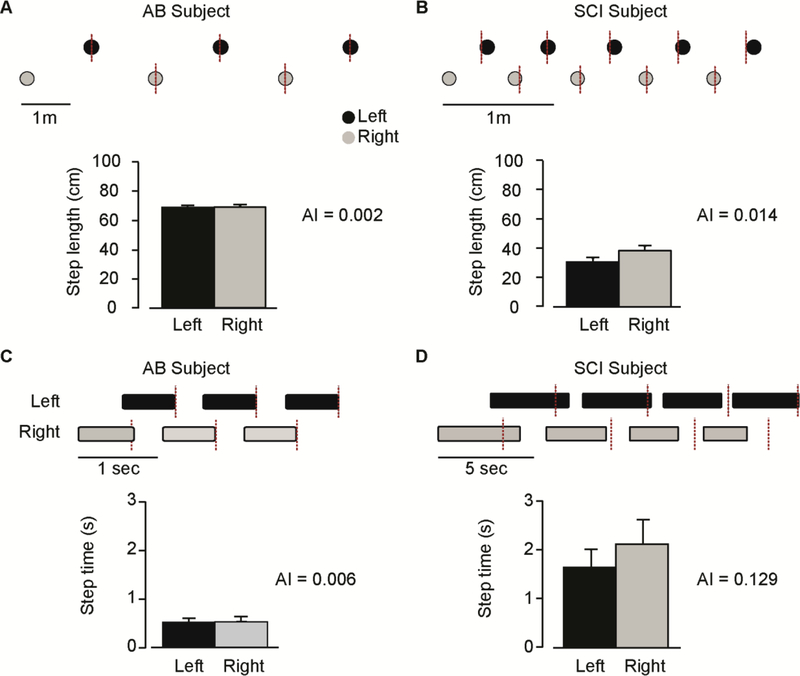Figure 1.
Spatial (A-B) and temporal (C-D) interlimb coordination for a person with incomplete spinal cord injury (right panel) and a healthy control (left panel). The four panels (A-D) are organized the same way. 1) Example of a few steps with stance (black bars) and swing (white spaces) phase durations for the spatial interlimb coordination panels (A-B) and distance between the left (black dot) and right (grey dot) contacts for the temporal interlimb coordination panels (C-D). The red dashed lines represent the value of right foot contact for a participant with perfect temporal and spatial symmetry. 2) Step length (A-B) and step time (C-D) mean values for the left (black bars) and right (grey bars) legs. An asymmetry index (AI) is also calculated to show the difference between the left and the right leg.

